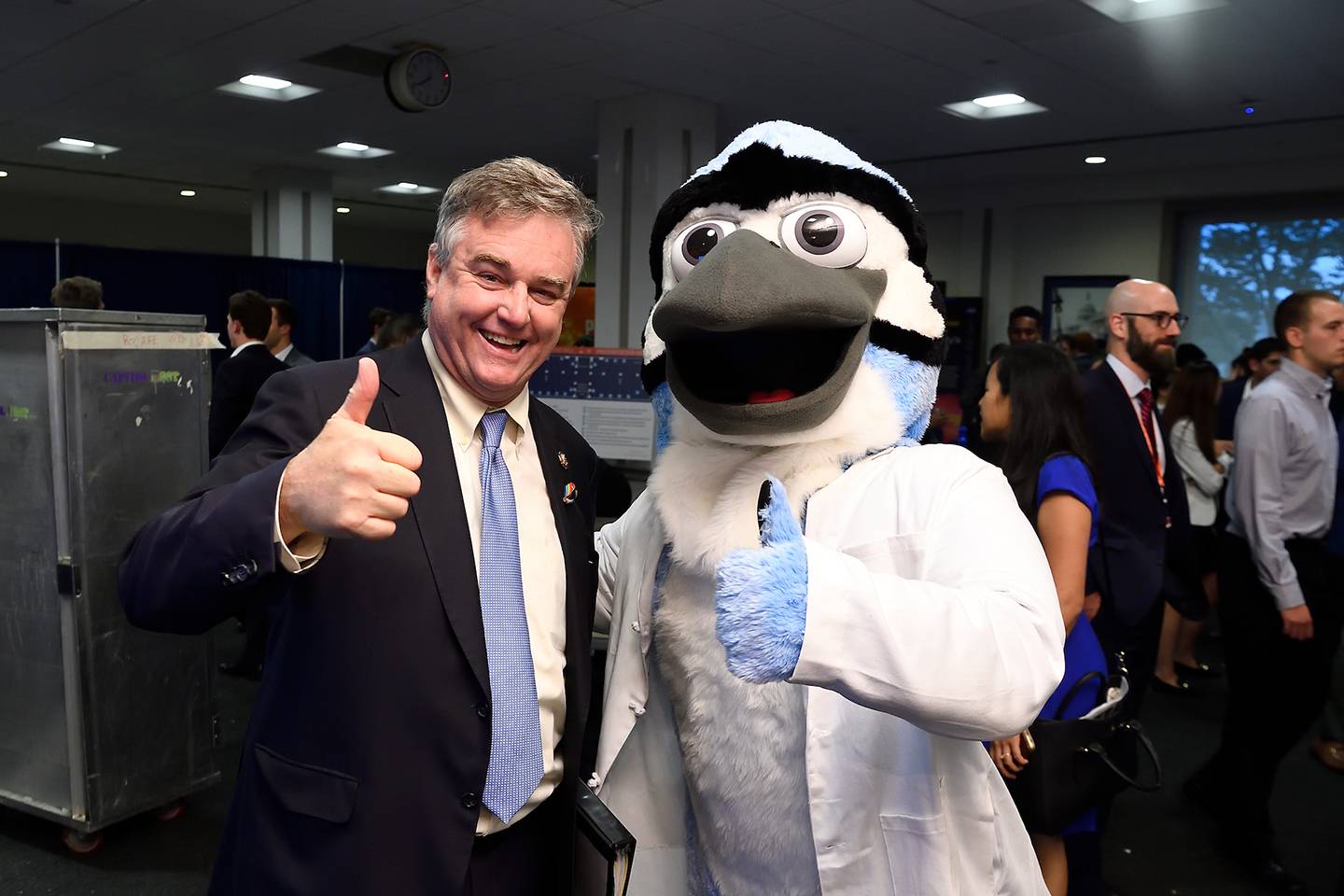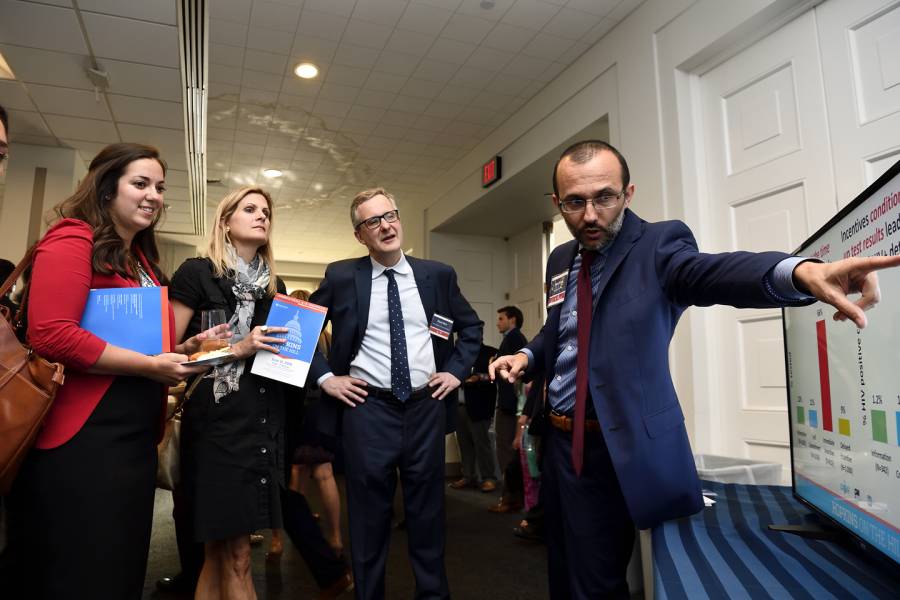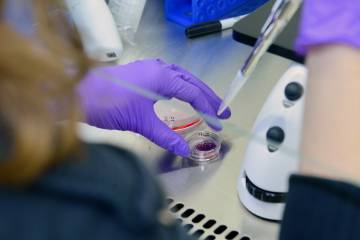Julia Bluestone can't help but feel emotional when she talks about the impact her research has on communities in Africa.
The researcher, a nurse-midwife with the Johns Hopkins global health affiliate Jhpiego, and her colleagues worked with the government of Uganda to use a Jhpiego-developed training approach for health workers to improve birth outcomes for babies and mothers. By creating low-cost, illustrated instruction materials and establishing interactive trainings that take place within the Uganda clinics where health workers treat their patients, the team able to decrease newborn deaths by 62%, stillbirths by 34%, and cut the rate of retained placenta by nearly half. When they instituted the trainings in a half-dozen clinics in Liberia, the number of stillbirths dropped from 400 to 100.
Those numbers—and the families they represent—make Bluestone tear up.
"I've been in this field for 20 years, and we never see results like that," Bluestone said. "You just don't see that kind of impact on patient outcomes—on people's lives."
Without a federal grant from the United States Agency for International Development, that project wouldn't have been possible.
Video credit: Patrick Ridgely and Dave Schmelick
Bluestone and her colleague Laura Fitzgerald presented their work Wednesday evening as part of Hopkins on the Hill, a biennial showcase of the range, value, and impact of federally funded research and programming that takes place across Johns Hopkins University. U.S. Reps. Elijah Cummings and David Trone, both from Maryland, attended the showcase in the Rayburn House Office Building in Washington, D.C., as did more than 500 others including members of the JHU community, Capitol Hill staffers, and the general public.
"This research and this enterprise would not happen but for the extraordinary collaboration and partnership between Johns Hopkins University and the federal government," Johns Hopkins President Ronald J. Daniels said during the event. "We're here to celebrate the strength and the vibrancy of this truly distinctive partnership that sets a standard and expectation around the world."
Johns Hopkins research, patient care, training, and service is conducted at more than 1,300 sites in more than 155 countries and on every continent, and for the past 39 years, Hopkins has led U.S. universities in research and development expenditures, with $2.562 billion in R&D spending in fiscal year 2017. The presenters at Hopkins on the Hill—21 teams representing all parts of the university—received funding from 16 different government agencies, including the Department of Energy, the National Endowment for the Arts, the National Science Foundation, the Army Research Laboratory, NASA, and the National Institutes of Health.
Jacob Lauinger, an associate professor in the Department of Near Eastern Studies in the Krieger School of Arts and Sciences, presented his open source project that aims to preserve and translate the information carved into clay tablets from the ancient Syrian kingdom of Ugarit. His research is supported by a grant from the National Endowment for the Humanities.
"This project is about preserving our human heritage," he said. "We're studying something that existed long before our nation—or indeed any modern nation—existed. It's valuable to study cultures so far removed from our own because it allows us to ask questions about the human condition, and what we're finding are striking commonalities."

Image caption: U.S. Rep. Elijah Cummings (left) talks with the researchers behind the emocha app
Image credit: Will Kirk / Johns Hopkins University
James M. Turner, a member of the Johns Hopkins Class of 1966 and a retired physicist, said he was impressed by the breadth and scope of the research presented at the showcase.
"For several decades, Hopkins has done more federally funded research than any other school, and I'm so proud of the work they're doing—smashing through frontiers and barriers so we can lead better lives and better understand our world," he said. "It's very impressive. And as a physicist, some of the things I'm seeing here tonight have been mind-boggling. It makes me very proud to be a Hopkins alum."
He was especially interested in the work of the Parker Solar Probe team, which presented an augmented reality version of the spacecraft they developed and built at the Johns Hopkins Applied Physics Lab. Using AR headsets, attendees at the showcase were given the opportunity to see a life-size, digital representation of the solar probe right in front of them.
Betsy Congdon, the engineer responsible for the probe's Thermal Protection System, demonstrated how just four-and-a-half inches of carbon foam, sandwiched between lightweight carbon-carbon sheets and coated with a bright white aluminum oxide to reflect the sun's rays, is able to absorb the sun's heat and keep the sensitive instruments aboard the spacecraft at a comfortable room temperature while traveling through the blazing hot solar corona.
Launched in August 2018, the solar probe will reach its aphelion, or the furthest orbital distance from the sun, later this month.
"It's been incredible to be part of this project," said Patrick Hill, project manager for Parker Solar Probe. "Unlike most other space missions, which take years to get to their destination, it was only three months until we had our first solar encounter. We have some of that science data back already, and it's revolutionary. We'll be publishing our research this fall, and it's really something to look forward to."

Image caption: U.S. Rep. David Trone with the Johns Hopkins Blue Jay
Image credit: Will Kirk / Johns Hopkins University
Denis Wirtz, vice provost for research at Johns Hopkins, was thrilled with the warm atmosphere and engaging presentations, which attracted a crowd from wide-ranging backgrounds.
"There was a buzz in the room that was palpable. I loved it," he said as the showcase drew to an end. "There was a lot of enthusiasm around research, and overall just an electric feeling and exciting atmosphere. It was a huge success."
Added Cybele Bjorklund, JHU's vice president for federal strategy: "I think it's not enough to just publish in a journal and hope a policymaker sees what we're doing. We need to bring it to life and bring it to people, to help them understand what we're doing and why it matters."
Correction: The country in which stillbirths dropped from 400 to 100 due to Jhpiego-developed training at a half-dozen clinics was misidentified in an earlier version of this article. The Hub regrets the error.
Posted in Science+Technology, University News, Politics+Society
Tagged undefined









